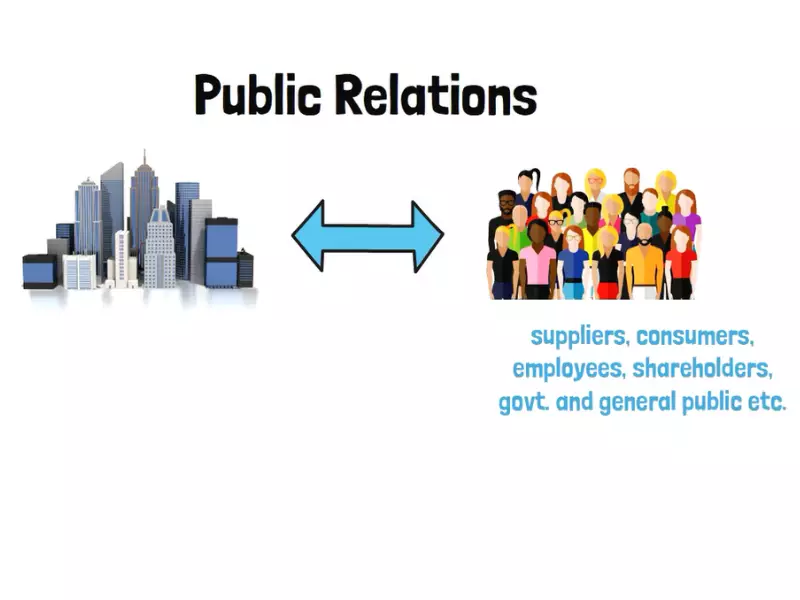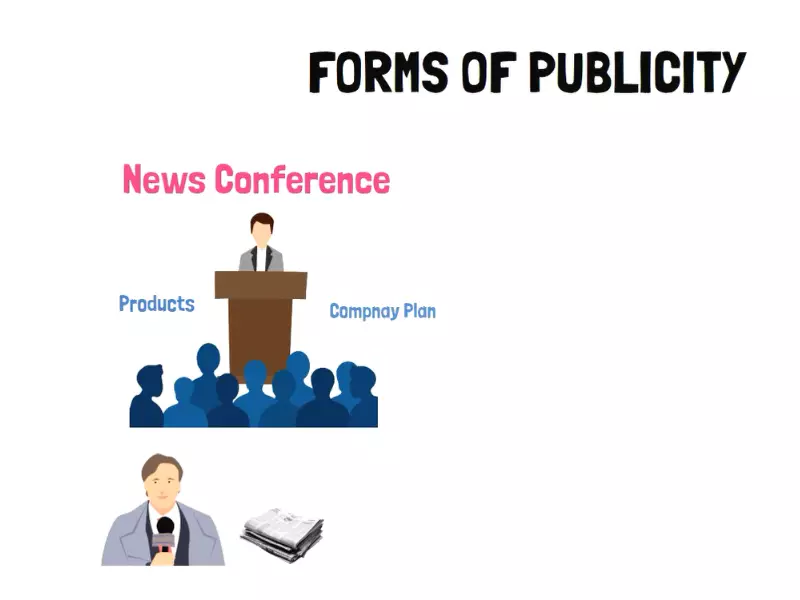Publicity and Public Relations (PR) are two pivotal aspects of communication strategies used by businesses and individuals to shape their public image and connect with their audience. While they share common ground in their aim to influence perceptions, their approaches, methodologies, and impacts significantly differ. This distinction is crucial for anyone looking to enhance their brand’s presence and effectiveness in the market.
The difference between publicity and public relations lies primarily in their objectives and methods. Publicity focuses on generating media coverage and public attention for immediate gains, often through sensational or noteworthy events. In contrast, public relations aims to build and maintain a positive image and a strong relationship with the public over time, using strategic communication and activities.
Understanding these differences is essential for deploying the right tactics to achieve desired outcomes. Publicity can be seen as a tool within the broader PR strategy, each serving specific purposes but often working together to support an organization’s overall goals. By recognizing their unique roles, businesses can more effectively manage their public image, respond to crises, and engage with their audience.

Core Concepts
Publicity Basics
Definition and Scope
Publicity refers to the act of making information about a person, product, or company widely known to the public, primarily through the media. It’s about capturing the public’s attention and is often seen as a subset of public relations. Publicity can be controlled or uncontrolled, depending on how the information is disseminated and who initiates it.
Objectives of Publicity
The main objectives of publicity include increasing awareness, generating interest, and influencing public perception. It aims to:
- Draw attention to an event, product, or business.
- Shape public perception positively.
- Create buzz or word-of-mouth.
Tools and Methods
Several tools and methods are employed in publicity:
- Press releases and media alerts to inform journalists and media outlets about something newsworthy.
- Social media campaigns to leverage platforms with large audiences.
- Public appearances and events to draw media attention.
- Influencer partnerships to reach target audiences through trusted figures.
Public Relations Basics
Definition and Scope
Public Relations (PR) is a strategic communication process that builds mutually beneficial relationships between organizations and their publics. Unlike publicity, PR encompasses a wider range of strategies and activities to maintain a positive public image and manage communication between a company and its stakeholders.
Objectives of Public Relations
The objectives of PR include:
- Building and maintaining a positive image.
- Managing communication during crises.
- Engaging with the audience to build trust.
- Influencing attitudes and behaviors.
Strategies and Techniques
Effective PR strategies and techniques involve:
- Strategic storytelling to convey the company’s messages.
- Media relations to foster a positive relationship with the press.
- Event management for engaging with the public directly.
- Content creation for digital platforms to maintain an active online presence.
Key Differences
Goals and Objectives
The goals and objectives of publicity and public relations differ significantly:
- Publicity often seeks immediate attention with short-term objectives.
- PR aims at building long-term relationships and a positive brand image.
Tactics and Execution
- Publicity employs uncontrolled messages, relying on media pick-up without direct oversight.
- PR uses controlled messages, crafting and delivering content directly or through selected channels.
Measurement of Success
- Publicity success is measured through quantitative metrics like media coverage volume.
- PR values qualitative metrics, assessing sentiment, engagement, and relationship quality.
Media Channels Used
- Publicity leverages both traditional (newspapers, TV) and new media (social platforms).
- PR strategically selects channels that best align with their long-term goals, including owned media (websites, blogs).
Impact on Business
Publicity Impact
Successful publicity can significantly impact a business by:
- Increasing visibility rapidly.
- Generating short-term sales boosts.
- Highlighting specific events or achievements.
However, it also comes with risks, such as negative attention or misinterpretation of the message.
Public Relations Impact
PR contributes to a business by:
- Strengthening brand loyalty and trust over time.
- Effectively managing crises, minimizing damage to the brand’s reputation.
- Building relationships with key stakeholders, including customers, investors, and employees.
PR’s role in crisis management is crucial, offering strategies to handle adverse situations gracefully and maintain the company’s standing.

Strategic Integration
Complementary Roles
How Publicity and PR Work Together
Publicity and Public Relations (PR) often operate hand in hand to achieve both immediate and long-term objectives for a business. Publicity can be seen as the spark that ignites interest in a brand, product, or event, generating immediate visibility and attention. PR, on the other hand, is the ongoing effort to maintain a positive image, manage relationships with stakeholders, and build trust over time. Together, they form a comprehensive communication strategy that leverages the strengths of both approaches:
- Immediate impact of publicity boosts brand awareness quickly.
- Sustained efforts of PR cultivate and maintain a positive brand image.
Balancing Short-term Gains with Long-term Goals
Balancing the immediate results of publicity with the long-term objectives of PR is crucial for a cohesive strategy. This balance ensures that while a brand enjoys the spotlight, it also builds a foundation for enduring success. Achieving this balance involves:
- Aligning publicity tactics with the overarching brand values and PR goals.
- Using publicity to highlight milestones or achievements while relying on PR to tell the deeper story of the brand.
Planning and Implementation
Developing a Cohesive Strategy
Creating a strategy that integrates both publicity and PR begins with a clear understanding of the brand’s goals, target audience, and the messages it wishes to convey. This strategy should outline how to use each tool effectively and identify the best channels for dissemination. Steps include:
- Identifying key messages and aligning them with target audience interests.
- Selecting the right mix of channels and tactics to reach those audiences.
- Timing the efforts to maximize impact, considering industry trends and consumer behavior.
Case Study of Integrated Approach
An example of a successful integrated approach is a technology company launching a new product. The company uses publicity to generate buzz through press releases, media events, and influencer partnerships. Simultaneously, it employs PR strategies to engage with stakeholders on social media, provide in-depth information through content marketing, and manage potential crises. This dual approach ensures immediate visibility for the new product while building a narrative around the brand’s innovation, customer commitment, and industry leadership.
Future Trends
Evolving Landscape
Digital Media’s Role
Digital media has transformed the landscape of both publicity and PR, offering new channels and tools for engaging with audiences. Social media platforms, blogs, podcasts, and online news outlets provide opportunities for brands to reach wider audiences more directly and personally than ever before. The role of digital media includes:
- Enhancing engagement through interactive content and direct communication.
- Expanding reach with global accessibility.
- Increasing the speed of information dissemination.
Shifts in Consumer Behavior
Consumer behavior has shifted significantly with the advent of digital media, with audiences now expecting more authentic and engaging content. Brands are no longer just providers of products or services but are expected to contribute value to their community and society. This shift requires PR and publicity strategies to be more:
- Consumer-centric, focusing on providing real value.
- Transparent and authentic, building trust through honesty.
- Responsive, adapting to feedback and conversations in real-time.
Adapting Strategies
Innovations in PR and Publicity
Innovations in technology and communication tools have provided new ways for PR and publicity to adapt and thrive. Artificial Intelligence (AI) and data analytics enable more targeted and personalized communication, while virtual events and augmented reality (AR) experiences offer fresh platforms for engagement. Innovations include:
- AI-driven content creation to produce more relevant and engaging material.
- Data analytics for understanding audience behavior and preferences.
- Virtual and AR experiences to create immersive brand interactions.
Predictions for Future Practices
Looking forward, the integration of publicity and PR is set to become even more seamless, with data-driven strategies leading the way. Predictions for future practices include:
- Greater personalization in messaging, tailoring content to individual preferences and behaviors.
- Increased use of immersive technologies to engage audiences in novel ways.
- More collaborative efforts between brands and their audiences, co-creating content and experiences.
Frequently Asked Questions
What is the main goal of publicity?
The main goal of publicity is to attract immediate public attention and media coverage. It seeks to create buzz and increase awareness about a person, product, or event in the short term, often through sensational or newsworthy stories.
How does public relations differ from advertising?
Public relations focuses on building and maintaining a positive image and relationships with the public through strategic communication and activities. Unlike advertising, which directly promotes products or services through paid placements, PR aims for organic media coverage and public engagement to foster trust and credibility.
Can publicity be negative?
Yes, publicity can be negative. While the aim is to attract attention, sometimes the attention garnered is not favorable. Negative publicity can arise from unfavorable events, scandals, or mishaps associated with a person or brand. Managing negative publicity requires careful crisis communication strategies, often falling under the purview of public relations.
How important is social media in public relations?
Social media is increasingly important in public relations as it provides a platform for direct communication with the public, media, and influencers. It allows organizations to share news, respond to queries, and engage with their audience in real time, making it a critical tool in modern PR strategies.
Conclusion
The nuanced differences between publicity and public relations underscore the complexity and depth of communication strategies essential for any organization’s success. Recognizing that publicity is a component of the broader public relations effort helps clarify their distinct roles in shaping public perception and building lasting relationships with the audience.
As the digital landscape evolves, the integration of both publicity and public relations becomes increasingly significant in navigating the challenges and opportunities presented by new media channels. Understanding their unique contributions and how they can complement each other is crucial for any communication strategy aimed at fostering a positive public image and achieving long-term success.
